Matador Network's Blog, page 1065
July 1, 2019
Mount Rainier National Park bloom

Wildflower season is coming early this year to Mount Rainier National Park in Washington and we’re hoping that the crowds will be a bit more manageable than the wildflower bloom mayhem that hit California earlier this year.
Usually wildflowers bloom from mid-July through August in the park, but this year they have already started blossoming all across the park. Glacier lily, avalanche lily, Sitka mountain ash, rosy spirea, Jeffrey’s shooting star, phlox, lupine, Sitka valerian, and western pasqueflowers can be seen along many of the park’s hiking trails.
The best way to see the wildflower bloom is by following one of the 10 recommended wildflower hiking trails across the national park and to check out the wildflower report that’s updated regularly. If you do visit the park, be sure to remain on the trails at all times to avoid causing any damage to the flower fields. 

More like this: The 7 most stunning wildflower blooms in the world and when they peak
The post Wildflowers in Mount Rainier National Park are blooming early this year appeared first on Matador Network.

A ‘Seinfeld’ museum is coming to NYC

Almost 30 years to the day of the show’s debut (July 5, 1989), the love for Seinfeld has hardly waned. The hilarious show is still so popular that, this fall, Seinfeld is getting its own attraction in New York City.
Created by event organizer Superfly, “The Seinfeld Experience” is scheduled to open in Manhattan’s Gramercy neighborhood in the fall of 2019 and will include costumes, memorabilia, set re-creations, and real props from the show — we want to see the Pez dispenser very badly.
According to the official press release, the experience “will allow fans to immerse themselves in the world of Seinfeld through an exploration of classic show moments and beloved characters. The ticketed experience will feature interactive exhibits designed to bring Seinfeld to life that include iconic costumes, memorabilia, set re-creations, and props from the show as well as never before seen content. In addition, the space will feature a retail store that offers limited edition and exclusive merchandise.”
Tickets will go on sale in the coming months, and will be available for purchase until February 2020. 

More like this: You don’t know real New York pizza until you’ve met its fiercest protector
The post Serenity now: A ‘Seinfeld’ museum is opening in NYC appeared first on Matador Network.

Best vegetarian Vietnamese dishes

is famous for its fresh ingredients, delicious bánh mì, and soul-warming phở. And while it’s not particularly known for being vegetarian-friendly, you shouldn’t sleep on Vietnam’s traditional meat-free meals. Two things to guarantee your meal is vegetarian: Make sure you know how to say “I am vegetarian” in Vietnamese (tôi là người ăn chay), and look for the word cháy, which means vegetarian, on the menu. Don’t worry though, this is one country you don’t have to worry about being deprived on flavor no matter what you order.
1. Gỏi cuốn cháy

Photo: /Shutterstock
These chilled spring rolls are most often seen with shrimp or pork, but a vegetarian option with tofu is not too uncommon. The dish is typically served fresh, not fried, and consists of vegetables wrapped in thin rice paper. This healthy appetizer is believed to have come from China, and can be found at many different restaurants. What elevates gỏi cuốn cháy is nước chấm (dipping sauce). There are generally two sauce options. The most common combines lime juice, fish sauce, water, sugar, and chili. Another popular option is a peanut sauce made with hoisin, soy, garlic, spices, and, of course, peanuts. Both sauces work so wonderfully well, you may find yourself becoming addicted (though the first is restricted to pescatarians).
2. Quả mít om

Photo: Teguh Jati Prasetyo/Shutterstock
Jackfruit has been used in Vietnam and India as a meat alternative for centuries, but the fleshy fruit is only now catching on in the West. It’s sure to soon start rivaling tofu as every clued-in vegetarian’s go-to meat substitute. Jackfruit has an uncannily similar texture to pork when braised in a dish called quả mít om. A typical way to cook it is in a clay pot, which ensures that heat and moisture are spread evenly and the final product is tender.
3. Phở cháy

Photo: /Shutterstock
Easily Vietnam’s most popular culinary export, phở is wolfed down everywhere — at home, in restaurants, and on plastic stools on sidewalks next to street vendors (and you should always, always, know how to order phở the right way if you’re particular about what’s inside the bowl). The cháy version replaces beef with tofu without compromising on taste. The savory broth is loaded with spices, ginger, and herbs like fresh basil. Inside the broth, you’ll find tofu and flat rice noodles. Garnish with extra lime and vegan fish sauce made with seaweed and miso as you wish. It’s the ultimate ethical comfort food.
4. Gỏi củ hủ dừa

Photo: Karol Ciesluk/Shutterstock
Coconut is cheap and ubiquitous in Vietnam, and the flesh is widely used in Vietnamese cooking. It’s never more judiciously used than in this light salad. Gỏi củ hủ dừa is often served at wedding parties, but it’s available at most restaurants and is easy to make. It’s comprised of a lively, tangy dressing (made from vegan fish sauce), a dash of lime, and a sprinkling of sugar.
5. Bánh mì cháy

Photo: /Shutterstock
A legacy of the French colonial period, the baguette sandwich known as bánh mì always comes bursting at the seams with your chosen filling. Inside the bread are carefully layered vegetables, protein, and sauce that’s assembled in a way that somehow keeps it from falling apart. Cháy is a vegetarian bánh mì, and vegetarians can up the protein content with ốp la (fried eggs). The sandwiches normally come with two eggs when you order from a street stall. Vegans can pack theirs with nutritious veggies (pickled cucumber, onion, tomato, lettuce, and cilantro) smeared with soy sauce.
6. Mì Quảng cháy

Photo: /Shutterstock
Hailing from Quảng Nam province in central Vietnam, mì Quảng cháy is a noodle soup that’s commonly served at informal occasions like lunch and at special occasions like weddings and anniversaries. The broth is both balanced and robust, with shiitake mushrooms, gourd, pumpkin, and taro alongside chunks of tofu and rice noodles. What’s inside typically is restricted by what’s available. No matter where you get it, turmeric is the non-negotiable spice required. Finely chopped cilantro provides the finishing touch. The end result is a rich noodle soup that’s enthusiastically slurped down by locals and foreigners alike.
7. Dậu hũ chiên sả ớt

Photo: /Shutterstock
This lemongrass and fried tofu dish is one of the most popular tofu dishes in Vietnam, and even meat-focused restaurants usually have it on the menu. Vietnamese chefs always succeed in getting the tofu to a perfect balance of crispy and charred on the outside and silky soft on the inside. Fried citrusy lemongrass and a smidge of chili add an extra frisson to this hearty meat substitute. Pair it with stir-fried jasmine flower, bitter lemon, or water spinach — all sautéed in garlic, of course. 

More like this: Beyond the basics: How to order pho like a pro
The post appeared first on Matador Network.

Greek island of Antikythera will pay

If you dream of peace and quiet and a simple life away from it all, living on a Greek island with only 20 other people probably sounds like music to your ears. Antikythera, around eight square miles of untouched nature located between Crete and mainland Greece, is looking for new residents.

Photo: Google Maps
The island’s population is aging and shrinking, signaling the death of the community. Before a family with three children moved there in the fall of 2018, the school had been closed for 24 years.
Due to the island’s relative inaccessibility compared to Mykonos and Santorini, as well as its lack of infrastructure, it hasn’t had the economic benefits of tourism.
To increase the island’s population, a campaign was launched with the help of the Orthodox Church, in search of new families willing to move to Antikythera. According to the Los Angeles Times, Antikythera could also use a baker, a builder, and a veterinarian, and it’s pulling out all the stops to seem appealing. Chosen applicants will be provided with a house, a piece of land for farming or on which to build a business, and a monthly stipend of $566 for their first three years of residence. 

More like this: 10 unspoiled Greek islands that won’t stay that way for long, according to search data
The post This gorgeous Greek island is paying people to go and live there appeared first on Matador Network.

June 29, 2019
7 mindblowing views in Mammoth Lakes

Imagine a landscape that combines Yellowstone and Yosemite, but without the eight million visitors per year — that’s Mammoth Lakes, CA. A town built for the great outdoors, it sits at a towering 7,880 feet above sea level, hugged on all sides by the stunning peaks of California’s Eastern Sierra. A skier’s paradise in winter, Mammoth Lakes transforms into a volcanic wonderland of waterfalls, hiking trails, and paddling sessions come summer. Believe it or not, this is the off-season.
Thrill-seekers can race down last season’s ski trails on mountain bikes or climb crevice-lined rocks that reach dozens of stories into the sky. Families can kayak, fly fish, or wander an endless series of trails to discover unearthly marvels: volcanic craters, geothermal springs, and alkaline lakes speckled with lunar-looking columns of limestone. In and around Mammoth Lakes, there’s a postcard landscape around pretty much every turn — but these seven will really blow you away.
1. Mono Lake

Photo: Rachel Ceretto
The first glimpse of this 70-square-mile expanse likely elicits the same reaction from everyone: “Whoa.” Formed more than 760,000 years ago, Mono Lake has no outlets. That means, for millennia, all the salt and mineral runoff from the surrounding mountains has collected in it, making it briny, inhospitable to fish, and thus oddly serene. Those minerals, over the years, have caused something else remarkable: jagged columns of calcified limestone that jut out from the pale water like spindly moon rocks, called “tufas” (that’s too-fuhs).
The best spot for tufa-viewing is along Mono Lake’s south shore. These pebbly, tufa-spiked beaches are a short, flat, partly boardwalk-lined stroll from the parking lot. Motorboats are prohibited on Mono Lake, but if you want to get a closer look, you can go by kayak, paddleboard, and canoe. Swimming is allowed as well — just don’t climb on or touch the tufas.
2. Hot Creek

Photo: Rachel Ceretto
At the Hot Creek Geological Site, a series of steamy, milky-blue pools bubble away literally feet from the course of a cold mountain stream. They look out of place, as if bits of some tropical beach were flown north and plopped down right here in the High Sierra.
Fueled by pressurized, magma-heated underground springs, the water in these pools often exceeds boiling point. The rest area and paved trail along the south side of Hot Creek are the perfect places for families to marvel from a safe distance. (This was a spot our kids yawned about during the 20-minute drive from Mammoth Lakes. But once they caught a glimpse of the steaming turquoise waters, their tune quickly changed to blissful, childlike awe.)
This is also a great spot for photos, with the Eastern Sierra’s snow-capped peaks framing the already surreal landscape. You’ll blow not only your minds, but also those of your Facebook and Instagram friends.
3. Mountainside

Photo: Rachel Ceretto
The canyon walls, boulders, and cliffs in and around Mammoth Lakes can be deceiving — they may look extreme, but you don’t have to be a pro to start scrambling here in the epicenter of Eastern Sierra rock climbing. Check out the granite tower of Crystal Crag, the dimpled volcanic rock of Clark Canyon, the massive, stand-alone boulders along Rock Creek…the area abounds with options.
Local guides, like the folks at Ground Up Climbing Guides, lead advanced climbers to Yosemite-level pitches but can also teach kids and newbies the basics of this addictive sport. Part teacher, part coach, part cheerleader, your guide will literally show you the ropes — and then safely strap you into them. Shoes, helmets, and (most importantly) decades of expertise are provided. All you need is a sense of adventure.
4. June Lake Loop

Photo: Rachel Ceretto
Follow I-395 as it snakes north from Mammoth Lakes, turn onto this semicircle of highway (Route 158), and you’re no longer in California: You’re high in the Alps surrounded by towering evergreens and the pebbly beaches of Grant Lake, Silver Lake, Gull Lake, and the namesake June Lake. Connected by a series of babbling creeks and backed by the rushing waterfalls trickling down June Mountain, this 16-mile stretch of road might just be the most scenic drive in the country.
Kayaks, paddleboards, and motorboats are available for rent from the lakes’ respective marinas. Those looking for a lazier day can picnic along the rocky shores, wade into the cold mountain waters, or just sit back and lap up the views. For hikers, the loop drive also brings you to several trailheads. You’ll be here for a while, so grab a local brew and a Hawaiian-inspired burrito at June Lake Brewing. Otherwise, Silver Lake Café is a classic roadside diner that’s fresh and homey.
5. Mammoth Mountain

Photo: Rachel Ceretto
To really appreciate how incredible the High Sierra landscape is, get on the Panorama Gondola for a ride to the top of Mammoth Mountain. At 11,053 feet of elevation, Mammoth’s summit is one giant 360-degree view of this vast and rugged region. It’s also home to the Eleven53 Interpretive Center, where you’ll learn about the natural history, ecology, and wildlife of the area.
During winter, the window-lined gondola cars transport skiers and snowboarders to their powdery launch points. In summer, mountain bikers take advantage of the lift, saving their energy for the adrenaline-pumping twists and turns that will send them racing back to town. (Mammoth Mountain also offers less extreme mountain-bike trails for youngsters and rookies. The experts at the Mammoth Mountain Bike Park can point you to the right trail and equip you for it at the same time.)
6. Mammoth Lakes Town Loop

Photo: Rachel Ceretto
If racing down winding mountain trails on two wheels isn’t quite your speed, check out the Town Loop, a scenic seven-mile bike path that circles Old Mammoth. Paved in parts and well-maintained gravel in others, the loop offers mesmerizing views of the Sherwin Range and Mammoth Creek. More advanced cyclists and mountain bikers can use the Town Loop as a launching point to connect to the miles of off-road trails and paved paths that crisscross the region.
Cyclists of all ages and abilities can gear up at Footloose Sports, Wave Rave, or any of the other locally owned sporting-goods rental shops along Main Street. In summer, in addition to paddleboards and kayaks, these stores rent out mountain bikes and electric bikes that make the uphill climbs child’s play (regardless of your age).
7. Upper Owens River

Photo: Rachel Ceretto
You might come to the Upper Owens to fly fish for rainbow and cutthroat trout, only to drop your rod and stare — OMG, the views! It’s hard to distinguish between a roll cast and a curve cast when you’re surrounded by such beauty.
The Upper Owens isn’t so much a river as it is a fairy-tale stream that winds through lush meadows dotted with marigolds and the odd bluebird. On one side: the snow-capped peaks of the Sierra Nevada. On the other: the jagged slopes of the Glass Mountain Ridge. In the middle: water and rolling fields of grass and — why are you here again? — oh yeah, trout. The river connects to some of the best stillwater fisheries in the West. During spring and fall spawning, it’s home to hefty rainbows and massive browns, some of which are so huge they’ve been nicknamed “Sierra steelhead.”
If you didn’t pack your rod and waders, head to one of Mammoth Lakes’ many locally owned sporting goods shops. Places like Kittredge Sports, The Troutfitter, and Rick’s Sport Center have the gear and guides to make anyone competent with a fly rod. And if fly fishing has you hooked, you’ll find more hot spots along Crowley Lake, the San Joaquin River, and the stunning Convict Lake — all of which are set in yet more landscapes that might just blow your mind. 
The post 7 mind-blowing landscapes in Mammoth Lakes, CA (and how to explore them) appeared first on Matador Network.

June 28, 2019
Influencers are ruining landmarks

The old people under the sun shelter were not feeling @bodybyjulezzz*.
“The hell she doin’ over there?” a clearly overheated older man in a purple hat asked his wife. “Filming a commercial?”
“She’s an influencer,” I told him, unrequested, while I stood behind him and watched.
“A what?” he said turning around.
“An influencer. She’s filming that for Facebook Live and putting it on her feed,” I told him.
“Ohhhhh,” he said, pretending to have any idea what I was talking about. “Why’s she gotta do it here?”
@bodybyjulezzz had conveniently set up shop right between the sun shelter and Rainbow Bridge, an iconic red rock bridge near Lake Powell on the Arizona–Utah border. Ideally, the sun shelter provided a place for overheated hikers to get a break from the desert sun and enjoy this wonder of nature. Today, it was a place to watch a fitness “model” in a sports bra hock packaged salads in front of an iPad.
“We’re out here enjoying this beautiful nature with Greens-to-go!” she told whoever was on the other side of the iPad. A crew of her friends were having a staged impromptu dance party behind her. “Great, healthy meals, perfect for hikes! How you liking that kale-quinoa, Callie??”
“Wooooo!” a blonde who looked like she’d never seen a carb yelled at the iPad. “QUINOAAAAA!!!!!!”
This is getting “back to nature” in the age of social media, where “influencers” come to beautiful places and convince us we want the exact same pictures they have. Like lemmings we follow en masse, experiencing the wonders of nature through the screen of a smartphone.
The results are places that were once testaments to the beauty of life reduced to pens of zombies clambering for the perfect picture. Turning some of the most scenic locales on the planet into giant frauds.
It’s hard to breathe in the beauty when people are breathing down your neck.

Photo: Craig Hastings/Shutterstock
Before my afternoon hike to see @bodybyjulezzz, I’d paid a visit to nearby Horseshoe Bend. For the unfamiliar, Horseshoe Bend is a spot where the Colorado River does an impressive 180 through towering red-and-green canyons. It’s often mistaken for being in the Grand Canyon, but it’s actually just outside Page, Arizona.
“Last time I was here, there wasn’t even a sign; you had to find it yourself,” another travel writer told me as we waited in a line of 15 cars so we could pay $10 to park in the vicinity Horseshoe Bend. “Now there’s a visitors center.”
A short hike up a hill and back down had us in a constant stream of people, all hoping to stand on the ledge above the canyon and take in the beauty. The ledge, however, looked more like a bar with $2 drink specials. People were standing three deep to get selfies with the Bend.
When I finally reached the front, I took a couple pictures of the scenery, then stood over the river and tried to comprehend the glory of the desert. Within 30 seconds I was interrupted.
“Hey, ah, would you mind moving, bro?” an Instagram husband asked me. “You got your shot. My girl needs to film here.”
Appreciating nature one selfie at a time

Photo: Matthew Meltzer
Later that afternoon we had a 1:30 PM appointment to tour Antelope Canyon, a red rock slot canyon where sun filters in a few hours a day, creating one of the most wondrous sights in the desert. You may recognize it from your Windows screen saver, or roughly 27,000 Instagram feeds.
You have to make an appointment to “hike” Antelope Canyon because demand is so high. I put “hike” in quotes because it’s more like waiting in line for a Disney ride, except there’s no Disney ride at the end.
The tours start in staging areas that look like remote bus stations, where a few hundred people sit crammed on stiff benches under sun shelters. They will wait there for an hour or more before their tour starts because if you’re not at the staging area 30 minutes early, your spot gets sold, and you get no refund. Sounds harsh, but let’s not start telling the Navajos about getting a bad deal.
The trip begins with a 15-minute dusty ride in the back of a five-ton truck, where you will sit shoulder to shoulder with a family of eight from either Ogden or Shenzhen.
When we finally arrived at the entrance to the canyon, the parking lot was filled with rows of similar five-ton trucks, each one bringing about two dozen more people into this tiny little canyon. Danny, our Navajo guide, took us to the back of the line, which extended about 40 yards out of the entrance.

Photo: 4kclips/Shutterstock
“This the line to get in?” I asked him.
“No, it’s the line to walk through,” he said. I brushed it off as semantics. It was not.
Inside, I saw no end to the line of people, which in many places took up the entire width of the canyon in an unmoving mob. Nearly all of them had their phones pointed to the top of the canyon; none looked anywhere but straight into their screens. Every few seconds, the mass of humanity would move, and just as soon stop.
“Hold on,” another guide told me as I attempted to ease my claustrophobia and step into one of the canyon’s larger, open areas. “These people need to get a picture in here.”
I waited while a family posed in a sunbeam like they were the only people for miles. Then another family followed, then a young couple. All that was missing was a drunk in a red suit asking them what they wanted for Christmas.
“Watch this!” our guide said when the room cleared. He grabbed some red sand from the ground and threw it up in the air like LeBron at pregame. The sun filtered through to create the same image you’ve seen online hundreds of times.
“Oooh, can you do that again?” a girl in our group asked. Danny obliged. Then he obliged again, until everyone had the right shot. We probably held up the line for five minutes.
This continued as I followed behind a man who looked to be FaceTiming his girlfriend, largely ignoring the canyon. He wasn’t the only one talking into his phone, some narrating their Snap stories, others doing live feeds. A canyon full of celebrities in their own minds, completely oblivious to the nature they waited so long to see.
“If you stop right here,” Danny said, “you’ll get the picture on your screen saver.”
He asked for my phone and took what was a pretty good replication of a shot I’m used to seeing covered in Word icons.
“If it’s on my screen saver, what do I need with this?” I asked him.
“Well,” he said. “You took this one.”
“No,” I replied. “You did.”
And this is where we are now: Traveling thousands of miles and waiting in an hour’s line to have someone else take a picture I’ve already seen.
An hour of shuffling through Antelope Canyon later, we finally made it out the other side. Then were asked to go back in so a photographer could get a picture of us coming out. After a few minutes enjoying the sun I braced myself for another line to walk back through to the truck. But without stopping for everyone’s selfies, we made it back in five minutes.

Photo: Matthew Meltzer
Back at Rainbow Bridge, @bodybyjulezzz was plugging some spiked seltzer water while The Chainsmokers echoed through the canyon.
“How long’s she gonna do this for?” another old man asked me.
“What’s up! Yeah, it IS beautiful here. Nature is the best!” @bodybyjulezzz shouted into her iPad.
“Probably a while, she’s talking to her followers now,” I said.
“Well then, let’s go back,” the old man said to his wife, and seemingly the rest of the old folks sitting under the overhang. “This ain’t what we came out here for.”
They picked up their water bottles and fanny packs and made their way back through the desert to the lake. @bodybyjulezzz didn’t even look up.
*“Influencer” and product names have been changed, but the story is true here, and unfortunately, pretty much everywhere. 

More like this: Horseshoe Bend in the Grand Canyon to impose entrance fee, thanks to Instagram
The post Thanks, ‘influencers!’ Visiting natural landmarks is now pure hell appeared first on Matador Network.

Best things to do in Moorea, Tahiti

Mention Tahiti and visions of turquoise lagoons and regal palm trees probably come to mind. But Tahiti is in fact just one of 118 islands and atolls that together make up the area known as French Polynesia or The Islands of Tahiti. Bora Bora, famed for its luxury overwater bungalows, is the most photographed isle of the bunch, but a far lesser-visited island may be an even better place to spend your time in French Polynesia: Moorea. Moorea offers up its own beautifully hued waters and impossibly white sand, all backed by stunning mountain peaks. Although one day is never enough, but you can get a good taste. Here’s how to spend it.
Getting to Moorea

Photo: TTONN/Shutterstock
Moorea is possibly the easiest island to get to from Fa’a’ā International Airport, which is located on the main island of Tahiti and where all international flights arrive. You could add Moorea onto your Tahiti itinerary at either end of your trip. Five airlines fly to Tahiti from the United States, with low-cost carrier French Bee offering fares starting at $330 for its non-stop service from San Francisco.
Once at the international airport, you could fly to Moorea on Air Tahiti, which has a 14-plane fleet that provides inter-island transportation. But you can save a bundle — and enjoy the fresh sea air — by getting out of the airport and hopping on a ferry to Moorea. The ferry dock is only 15 minutes from the airport.
Two lines, Aremiti and Terevau, offer multiple daily departures from both Tahiti and Moorea. A round-trip ticket on Aremiti runs about $28 (3,000 XPF) and, depending on the boat, takes 35 to 40 minutes. Terevau is a bit less expensive at $22 (2320 XPF) and takes a half-hour to make the trip. Regardless of which you choose, the scenery makes time go fast.
Morning in Moorea

Photo: Martin Valigursky/Shutterstock
One main road circles Moorea. If you want to go it on your own, you can rent a car. If you’ve only got one day, then tours that include pick-up and drop-off options, such as the one offered by the Moorea Activities Center, are a good way to go to get the biggest bang for your buck and your time. Public transportation isn’t an option.
Some of the island’s best views come from being on or in the water — and taking in the island from the comfort of mild, aquamarine water is an excellent way to start your day. Moorea is a scuba divers’ paradise, but the snorkeling is also magical. Instead of loading large groups onto boats, Moorea Activities Center uses jet skis for its snorkeling trips. Lather on the reef-safe sunscreen, because you’ll spend about three hours zig-zagging around the island, stopping to admire dolphins, turtles, and other marine life.
There are multiple chances to spot and admire the underwater life along the way. The coral garden between Motu Tiahura and Motu Fareone offers colorful snorkeling, but it’s really just a warm up for the sting rays and blacktip sharks waiting near Les Tipaniers hotel. The popular spot doesn’t really have a name, but it’s hard to miss; there will be an assortment of kayaks gathered, as well as folks in snorkel masks glued to the water watching sharks and rays gliding through the seas below.
Inland afternoon

Photo: TWEITH/Shutterstock
A defining feature of Moorea is its lush mountain landscape. Mount Tohivea reaches nearly 4,000 feet and is surrounded by other peaks that are not quite as high. Hiking in the wild, mountainous interior takes you through jungles and past pineapple plantations — leading to excellent views of the lagoons of the main island of Tahiti.
Hikers make the steep, two-hour trek to Magic Mountain every day. You’ll pay a $1.90 (200XPF) per person fee for trail maintenance, which seems a partly sum for the priceless panorama you’ll get from the top: green hillsides and water every shade of blue, with some boats and overwater bungalows thrown in for good measure.
If you do stay more than one day, you’ll have more opportunities to trek through Moorea’s wild interior — full of caves, lava tubes, and waterfalls. A guided, four-hour Three Coconuts trek to an ancient volcano can often be organized through your hotel.
Exploring on ATVs

Photo: Marcelo Alex/Shutterstock
Many travelers head up to Magic Mountain on all-terrain vehicles. Slabs of concrete, remnants of an old, narrow road, form the trail. As you climb, expect moments when the view forces you to hit the brakes. The ATVs will take you far, but the final push to the top has to be done on foot.
If you’ve stayed on with the Moorea Activities Center, and booked the Medium Combo tour, they’ll keep you for the afternoon — after giving you a ride to pick up post-snorkeling lunch. Then you’ll start exploring on ATVs. You can ride the ATVs solo or as a pair.
The Moorea Activities Center tour allows you a few miles on the road to get used to how the ATVs move before heading into the Opunohu Valley. That’s when the real fun begins, rolling alongside and across rivers and winding through pineapple plantations.
Bumping along is a fun, wild ride, but when the rest breaks come, you’ll be ready. Especially when you reach the Belvedere lookout. Looking over the lush Opunohu Valley, you also get vistas of Moorea’s Opunohu Bay and Cook’s Bay.
Ending your day with island flavors

Photo: Lilikoi Garden Café/Facebook
Still on your tour, you’ll come to the nearby Agricultural School, or Lycee Agricole, where you can taste a selection of locally made jams or cool off with a scoop of ice cream. You might say guides save the best for last, dropping by the Manutea Juice Factory toward the end of the day. Along with juices and jams, you can sample an assortment of tropical liquors and fruit wines. If you’re hunting for gifts or souvenirs to take home, be sure to bring some cash along on the ride.
If your idea of the perfect day involves surf and sand, you can call it a day on Moorea’s Tahiamanu Beach. When you need a break from the sun, head to nearby Lilikoi Garden Café. Chef Laurence Anzai runs this tiny eatery in her home garden. The menu includes tuna poke, shrimp curry, chicken teriyaki, and local ice cream.
If you decide to stay another day

Photo: Tourisme Tahiti
The ferry schedule makes a day trip doable, especially if you book tours to help you make the most out of your time on the islands. But staying a while isn’t a bad idea either — and Moorea is generally a less expensive holiday option than pricey Bora Bora.
If you’re lucky enough to get more time, the Hilton Moorea Lagoon Resort & Spa features those classic overwater bungalows, as well as less expensive garden accommodations. Its onsite Toatea Crêperie & Bar is located on a boardwalk over the water, so you can eat savory and sweet French crepes while watching black-tip sharks swim below your feet.
You can stretch your dollar a little farther, without giving up location or comfort, at the Moorea Beach Lodge. The Tahitian guesthouse offers a dozen bungalows (and one larger family bungalow) steps from the beach. A large kitchen with surf and sand views is available for guest use every day from 11:00 AM to 11:00 PM. The Lodge also provides a handful of kayaks for guests to use. 

More like this: Kalanggaman Island is one of the best getaways in the Philippines
The post Forget Bora Bora. The best island to visit in Tahiti is Moorea. appeared first on Matador Network.

Best musical experiences in Berlin

The capital of Germany has been celebrated for decades as a bastion of culture and creativity, with a daring, artistic spirit going hand in hand with a history of rebellion, revolution, and renewal. Artists flocked to Berlin even in the dark days before the Fall of the Wall, trying to tap into a growing sense of defiance within certain subsets of the community and a desire to go against the grain at any cost. The grimy basement bars of the ‘70s and ‘80s became favorite haunts of international and controversial greats like David Bowie, Iggy Pop, and Nick Cave, along with politically charged German punk bands like Die Toten Hosen. Here, deep underground, beneath the shadow of the Wall, the modern-day soundtrack to a city was born.
Today, Berlin is known as a party city. It boasts one of the best clubbing scenes in the world and is home base for numerous creators of cutting-edge electronic music. But there’s much more to Berlin’s music scene than its justly famous temples of techno. These are some of the most unique and unmissable musical experiences the city has to offer.
For an all-around musical overview, take the Berlin Music Tour.

Photo: cbies/Shutterstock
Berlin relies on its reputation as an arts hub to attract music lovers from around the globe. They come to experience a deep dive, both into Berlin’s world-shaking music history and its current wave of ground-breaking musical output. Thilo Schmied is a legendary connoisseur of Berlin’s rock music history and the perfect person to show them the ropes. Not just a proudly unapologetic superfan, Thilo worked in the industry during its headiest eras, when those mega-stars of 20th-century rock occupied the city’s clubs. A sound engineer turned passionate tour guide, Thilo has been running his Berlin Music Tours since 2005. Ask him about any artist during their inevitably debauched ‘Berlin period’ and he’ll have a story to share.
There are a variety of tours on offer depending on your interests. For example, his Berlin Bowie tours paint a vivid picture of Bowie’s time in the city during the recording of the “Berlin trilogy.” For an all-around sampler of Berlin’s most influential musical places and the personalities who gave them mythic status, the Bus Tour is a thoroughly entertaining 2.5-hour journey through Berlin’s colorful city streets.
Spiked by scandalous anecdotes, Thilo’s commentary thoroughly explains what made a pre-reunited Berlin such fertile ground for musicians as diverse as Nina Hagen, Siouxie Sioux, Depeche Mode, and U2. You’ll pass the unassuming flat in Shöneberg where Iggy and Bowie once co-resided before stopping in for a stiff drink at the pair’s favorite bar, Neues Ufer, where a portrait of Bowie still watches over patrons. While the tour is largely dedicated to Berlin’s rock ‘n’ roll origin story, Thilo takes care to acknowledge what came after. The fact that so many icons gravitated to Berlin in the ‘70s and ‘80s laid the groundwork for a scene that flourishes to this day.
The tour finishes with a daytime preview of some of the coolest nightspots in the city. Whether you need to know where the hottest DJs in the city are spinning or where to headbang to the heaviest of heavy German metal, Thilo will point you in the right direction.
Stop into Hansa Studios, the famous “studio by the Wall.”

Photo: Hansa Studios/Facebook
Hansa Studios, once known as “the studio by the Wall,” is perhaps the most sacred site in Berlin for the hardcore music-history devotee. The current building opened in 1973 and is still a working recording studio. Standing in almost complete isolation in the midst of a war-flattened wasteland, it was a sort of last outpost of creative freedom overlooked by the world’s most notorious symbol of repression and authoritarian control. The view from the window of Studio 2 most poignantly served as the lyrical inspiration for “Heroes,” Bowie’s story of two unwillingly separated lovers, but Hansa has produced scores of acclaimed recordings over the decades from the likes of Brian Eno, U2, Nick Cave, Tangerine Dream, R.E.M., David Byrne, the Pixies, Rammstein, and countless others.
Because Hansa is a working studio and not a tourist destination, the only practical way to get inside is by pre-booking an excursion with Berlin Music Tours. Access is highly dependent on what’s going on in the studio on any given day, but for serious music fans, a visit to the hallowed halls of Hansa is a once-in-a-lifetime experience.
Hit the streets for some vinyl shopping.

Photo: Hard Wax/Facebook
If your most beloved souvenirs are of the vinyl variety, Berlin’s record stores will keep you busy for days. Space Hall in Kreuzberg is an overwhelming behemoth of a building. While many Berlin stores cater to specific genres, Space Hall stocks must-haves and rarities spanning the entire musical spectrum. You’ll find an entire section dedicated to soul, jazz, and funk; another to rock, punk, industrial, and new wave; and a backroom meticulously cataloging every conceivable electronic sub-genre. For hard-to-find techno, house, disco, and D&B, Hard Wax, another Kreuzberg institution, is a crate-digging DJs dream with a huge back catalog of everything from primitive dub reggae to old-school Chicago house.
Just south of Kreuzberg is Neukölln and Soultrade Records, where you’ll find an extensive collection of soul, R&B, hip-hop, funk, and jazz. Legendary DJ producers Hunee and Alex Barck of acid-jazz collective Jazzanova once worked the racks here, and today Soultrade is still a happy hunting ground for collectors of rare groove, world music, classic gospel, and neo-soul. Berlin’s punk rock spirit lives on at Friedrichshain’s Bis Aufs Messer. Despite its small size, BAM is surprisingly awesome for obscure pressings at bargain basement prices on metal, hardcore, garage punk, and indie rock.
Drink, dance, and party after dark.

Photo: 360b/Shutterstock
If you’ve partied in Berlin, you already know that SO36 in Kreuzberg isn’t just a postcode but the city’s most famous live venue. Berlin’s answer to CBGB, the stage at SO36 has been graced (and disgraced) by the likes of Bowie, Iggy Pop, the Bad Seeds, the Dead Kennedys, and Die Toten Hosen. Today, SO36 still champions exciting new independent acts from across genres, remaining true to its pioneering punk past.
Berlin has no shortage of jazz clubs, but Zig Zag in Schöneberg is a local favorite. Serious jazz clubs can be intimidating, but the atmosphere here is decidedly intimate and inviting. A random visit might yield anything from a feel-good night of classic soul to an enrapturing instrumental performance from the jazz world’s latest genius-level darling.
Audiences of all musical persuasions will find themselves warmly welcomed at Junction Bar, a two-story venue consisting of an upstairs café and a basement club. The dance floor is generally packed with fans rocking out to everything from indie folk to jazz, rap, salsa, rockabilly, and the occasional evening of French chanson or cabaret.
Have a Berlin-style clubbing experience.

Photo: Salon – Zur wilden Renate/Facebook
It’s no coincidence that the collapse of the Berlin Wall in November 1991 coincided with the rise of Berlin’s world-famous clubbing culture. The heady mix of hope and hedonism in the years that followed was a catalyst for underground clubs to take root across the city. Today, Berlin’s club scene is far more mainstream, but a night of clubbing in Berlin until long after the sun comes up remains a thoroughly incomparable experience.
For years, Berghain remained unchallenged as the most iconic and exclusive nightclub in the world. But an oppressive door policy and years of tyrannical bouncers turning away punters on a whim helped Berghain fall out of favor in recent times. Nevertheless, the futuristic majesty of its massive industrial space (the site of a former power station), its mind-melting sound system, and the sheer intensity of its sex- and drug-fueled atmosphere still ensure it ranks among the world’s greatest clubs.
Amazingly, Berghain can’t lay claim to being the only Berlin mega-club housed in a converted power plant. With a brutalist exterior cutting a sinister spectacle even from afar, Tresor somehow manages to be even more terrifying. You’ll have to navigate a disorienting labyrinth of pitch-dark corridors, dead-end hallways, and tightly angled metal staircases. Follow the neon flashes and booming beats until you’re transported to a series of cavernous dance dungeons pumping out hard-style anthems, deep house, and progressive trance. If you’re still not completely delirious, make your way down to the tripped-out basement soundtracked by sonic swirls of moody ambient experimentalism.
Far more first-time friendly is Salon – Zur Wilden Renate. The place is a slightly disheveled multi-story apartment building transformed into a full-scale clubbing emporium with a slightly demented amusement park aesthetic. There are themed levels devoted to different electronic genres from the familiar to the outright bizarre. In summer, Renate hosts open-air parties in its courtyard — a great place to meet people over cheap drinks and tunes.
Berlin’s music scene beyond the bars
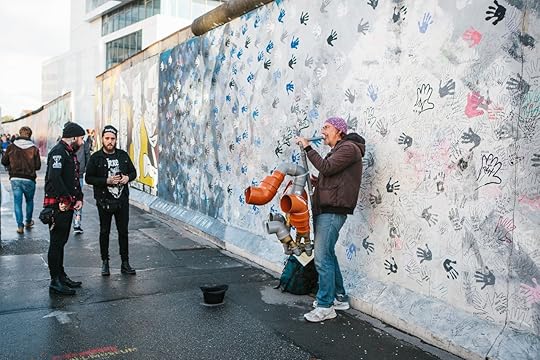
Photo: franz12/Shutterstock
What makes Berlin different from other cities with strong musical cultures is that whether you’re a musician or just a fan, music is a lifestyle here. And some of the city’s best musical experiences aren’t confined to the bars, clubs, or festivals but out on the streets, free to anyone who might care to stop and listen.
Berlin’s public spaces — streets, parks, and plazas — are performance spaces in their own right, and the quality of street musicians is top-notch. Many great talents began by busking outside the station on legendary Warschauer Strasser, though these days a vibrant busking scene has arisen close to the East Side Gallery murals. Finally, don’t close a trip to Berlin without a visit to the Sunday Bearpit Karaoke in Mauerpark, where anyone with a desire to perform in public can fulfill their dreams without fear of judgment or ridicule. Music has the incredible power to break down barriers and bring people together. Perhaps no other city on Earth understands that better than Berlin. 

More like this: How currywurst became Berlin’s favorite street food (and where to try it)
The post How to dive into Berlin’s epic musical history appeared first on Matador Network.

Camping and cooking without fire

In the era of climate change, worse-than-ever wildfires are becoming uncomfortably routine. Just look at California, whose deadly 2018 wildfire season left unprecedented damage. Fires have long been a Golden State trademark, but as temperatures rise and the dry season extends, the magnitude of the infernos is sounding alarms.
In fact, fire danger is high across the western US. Last year, record-breaking blazes also spread through British Columbia and the UK. Accordingly, fire restrictions are getting tougher. With the dry season underway, and a summer of fun up ahead, it’s time to start thinking about camping without fire.
How do fire restrictions impact campers?

Photo: SageElyse/Shutterstock
In a state like California, which has more national parks than any other and epic wilderness top to bottom, increased fire danger is on the minds of not only locals but also those eager to do like Kerouac and venture into the West Coast wilderness.
And it should be. Human activity is the leading cause of wildfires in the US, responsible for around 85 percent according to the National Parks Service, which cites unattended campfires as a major perpetrator. To curb the possibility of wildfires, fire-prone wilderness areas, including prized national parks and forests, often implement restrictions or bans on open flames.
The US Forest Service outlines two stages of restrictions: the first prohibits campfires outside of designated recreation areas. The second outlaws all campfires, as well as charcoal, wood, and coal stoves. Even when there are no restrictions, the Forest Service suggests using “alternatives to campfires during periods of high fire danger.”
Regulations vary around the world and by season. Always check to see what restrictions are in place and what that means for you, whether it’s obtaining an open-fire permit, as is required throughout California, or making do when all flames, even propane stoves, are off limits.
Is camping without fire worth it?
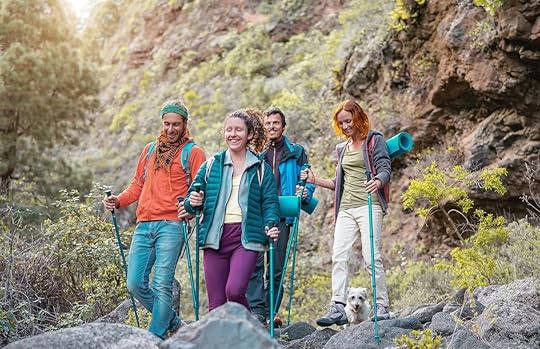
Photo: AlessandroBiascioli/Shutterstock
In short: yes. Camping without a bright, warm fire to roast marshmallows over may seem bleak — but with a little creativity, a campfire-free trip can be just as rewarding.
You’ll still spend your days hiking; splashing in lakes, creeks, or even ocean; and surveying the wildlife. Then, come nightfall, you’ll appreciate a more intense quiet without a campfire crackling in the background, and better stargazing conditions if your light sources come with on-off switches. Play it right, and you won’t even have to forgo the s’mores.
Plan your meals accordingly.

Photo: frantic00/Shutterstock
Some fire bans only prohibit wood and charcoal fires, allowing gas or propane stoves, grills, and similar implements that can be shut off with a valve. You can pull off a lot with a portable, one-or-two-burner setup: one-pot pasta dishes or simple pad thai, chilaquiles or chilli with cornbread, or blueberry buttermilk pancakes for breakfast.
Other times, all open flames are prohibited. Have no fear, though: There are tons of no-cook recipes out there to keep you well fed. Start the day with granola or muesli, try out different wrap recipes for lunch, and fill up on hearty bean and veggie salads at dinnertime. Supplement with meals you can prep at home, as well as freeze dried or dehydrated foods and snacks like energy bars and trail mix for extra protein. For a completely no-cook dessert, try slathering marshmallow fluff and Nutella on graham crackers. It’s not quite s’mores, but it’ll hit the spot.
Pack appropriately.

Photo: Iam_Anupong/Shutterstock
Campfires provide warmth, both in the heat they give off and the comfort they radiate. To stay cozy on a fire-free camping trip, bring extra blankets, layers, and accessories like insulated sitting and sleeping pads for optimal comfort. Even during the hot season, when fire danger is at its peak, temperatures tend to drop at night, a fact made that much more obvious when you’re sleeping outside. You’ll want dry socks, a beanie, and an extra fleece come sundown.
In warm, buggy areas, remember to pack repellent, as well. Without campfire smoke to ward off uninvited pests, you’re bound to notice more mosquitoes and other bugs.
Find new ways to stay entertained.

Photo: Rawpixel.com/Shutterstock
For some, camping without fire is less a matter of practical fixes and more a question of fun. Where will you retire after an exhausting day, talk about tomorrow’s plans over dinner, and maybe even whip out a guitar for a chorus of campfire songs?
Downtime looks different without a fire blazing at the heart of camp, but different doesn’t have to mean worse. Come prepared with easy-to-carry, play-anywhere entertainment like Bananagrams, backpack bocce ball, cribbage, travel chess or checkers, and party games like Apples to Apples and Cards Against Humanity.
Make use of the dark by stargazing, telling good old-fashioned ghost stories, shutting off your flashlights for a game of hide and seek, or using them for a round of flashlight tag. All ages can enjoy camping without fire if you play your cards right, or literally.
Build a flame-free campfire.

Photo: Wittybear/Shutterstock
Between lanterns, flashlights, headlamps, and every other fire-ban-approved light source, the idea of camping by firelight is romantic, sure, but hardly necessary. Still, having a communal area around which to play nightly campfire games is key for a quintessential camping trip. Thankfully, you don’t have to go without, even when fire bans are in effect.
When lugging around a propane fire pit isn’t an option, opt for a flame-free alternative. If you’re car camping, find a central area where everyone can congregate, like a picnic table, and set up lanterns there. Maybe even arrange a few fake candles around the base for ambiance.
If, on the other hand, you’re deep in the backcountry, try building a flame-less campfire out of fire-safe light sources. Tent or stack a handful of logs like you normally would, then drape string lights, glow sticks, and flashlights around for a fake campfire that’s every bit as dreamy. 

More like this: Why wild camping is the ultimate de-stressor
The post How to go camping without fire when fire danger is high (and still have fun) appeared first on Matador Network.

Where to travel by float plane
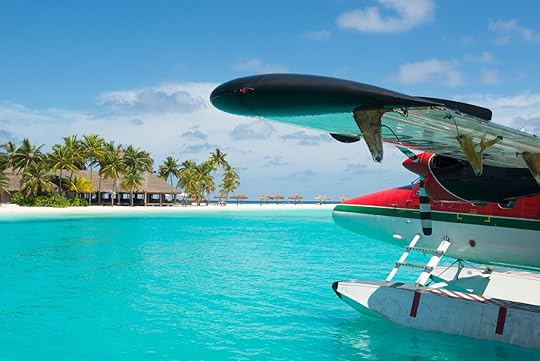
Travelers know that the journey is the destination, but as airlines continue to cramp passengers into smaller seats and more and more people opt to travel, at times, the journey can be downright miserable. If you’re over it, consider heading to places where getting there is half the fun — a memorable and enjoyable part of the travel experience. Oversold flights and view-less middle seats are foreign to destinations where you arrive not by traditional means but by float planes.
Also called seaplanes, float planes seldom have more than a few seats — think 20 or less — and typically provide killer views as you fly low to wherever you’re headed. When they’re a regular route rather than a private charter, float plane rides can be affordable and double up as a tour unto themselves. Float planes enable quick and easy access to remote places, let passengers island hop with ease, and even provide door-to-door delivery at waterfront resorts. Below are nine places you can (and should) travel to by float plane.
1. Vancouver, Canada

Photo: Harbour Air Seaplanes/Facebook
A seaplane flight from downtown Vancouver to its surrounding islands will afford passengers stunning views of mountains, lakes, thick green forests, and glistening city centers. Harbour Air, the world’s largest seaplane airline, flies to Vancouver Island and various destinations in the area including places like Whistler, Richmond, Salt Spring Island, and Sechelt. The airline offers both regular, pre-scheduled flights and private chartered tours to show off some of the most scenic vistas of British Columbia.
2. Florida, United States

Photo: Miami Seaplane Tours/Facebook
Few places could offer better views from a float plane than Florida. The most tropical of the continental United States, Florida is a peninsula encased by thousands of miles of coastline, with the Gulf of Mexico on one side and the Atlantic Ocean on the other.
Travelers who want to be treated to the sight of beaches from above can take Staniel Air from South Florida to the Exumas or to Bungalows Key Largo. Alternatively, Miami Seaplane Tours offers tours around Miami or trips to Key West, Bimini, or Biscayne National Park in the Keys. For an inland adventure, check out Jones Brothers Air & Seaplane Adventures for flights over chains of lakes in the central Florida area.
3. The Maldives
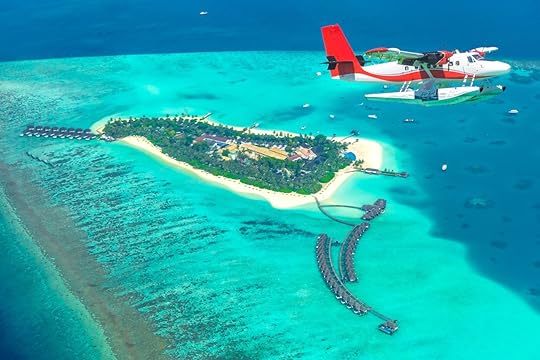
Photo: icemanphotos/Shutterstock
If any place in the world could top the scenes from a Florida float plane ride, it would be the Maldives in the Indian Ocean. Luxury travelers, honeymooners, and those who can’t resist blue water and bungalows head to this tropical South Asian nation en masse for the vacation experience of a lifetime. Travelers would have a hard time making it to the Maldives without flying in a float plane at some point; Trans Maldivian is the airline that visitors take for transfers between the 1,000 islands and many resorts.
4. New Zealand

Photo: Wings and Water
The grandiose landscapes of New Zealand — mountains, volcanoes, glaciers, lakes, and coastlines — treat air travelers to otherworldly scenes.
Auckland Seaplanes, which can reach any coastal destination within 800 kilometers, provides transfers to many beach locations in the Hauraki Gulf, the Bay of Island, and the lakes of the Central North Island, while Wings & Water provides scenic flights and transport to remote areas of Fiordland. For a more informative experience, Taupo’s Floatplane offers a range of sightseeing tours over New Zealand’s World Heritage Tongariro National Park (including Mount Ruapehu), Volcanic Plateau, Great Lake Taupo, Bay of Plenty, White Island, and the many lakes of Rotorua.
5. Seattle, United States
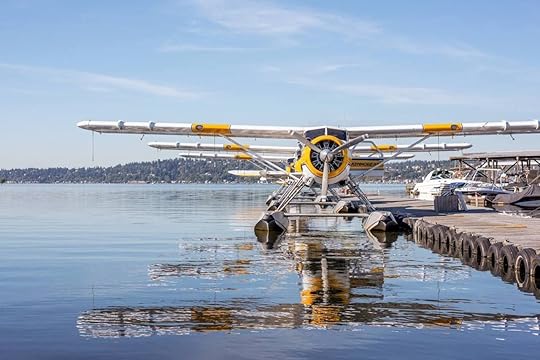
Photo: Kenmore Air/Facebook
Kenmore Air, a major seaplane operator, flies from Seattle to the San Juan Islands, as well as Vancouver (for as low as $49 one way), Victoria, points in coastal British Columbia, and the Olympic Peninsula — all destinations with beautiful natural landscapes that are worth being seen from above.
6. Fiji

Photo: Pacific Island Air/Facebook
The 300 islands making up the South Pacific archipelago of Fiji are an ideal spot for taking to the air in a plane that can land on water. From overwater bungalows to colorful coral reefs, Fiji is all about the H2O, and the transportation methods are no exception.
In Fiji, Pacific Island Air will take you to the Yasawa Islands and Mamanuca Islands, with charter flight options available to all other destinations around Fiji, including Savu Savu, Suva, Pacific Harbour, Taveuni, the outer islands of the Lau Group, and various resorts. Turtle Airways is another option for getting to the Yasawa Islands and Mamanuca Islands.
7. Yellowknife, Canada
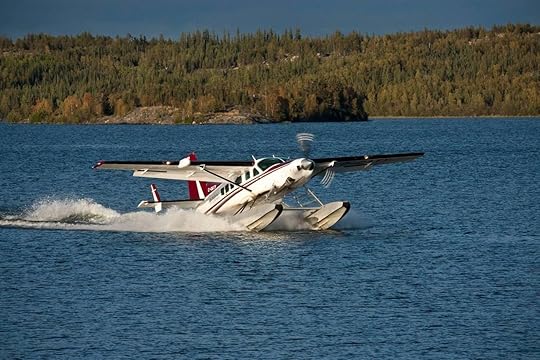
Photo: Air Tindi Ltd./Facebook
The remote city of Yellowknife, the capital of Canada’s Northwest Territories, is located on the north shore of Great Slave Lake and is surrounded by thousands of lakes, so visiting via seaplane is perhaps the most convenient way to see the sights.
In Yellowknife, travelers can take Air Tindi to Great Slave Lake East Arm, Nahanni National Park, and Acasta Lake. Ahmic Air offers charter services and tours in a DHC-2 Beaver aircraft with enlarged windows for greater visibility.
8. United Arab Emirates

Photo: Seawings Dubai/Facebook
Visiting the United Arab Emirates is described as coming upon an oasis in a desert, but if you board a float plane flight, you’ll see it’s no mirage.
Seawings flights take place in Cessna 208 Caravan Seaplanes and transport passengers to destinations like Dubai, Abu Dhabi, Ras Al Khaimah, and Fujairah. Along the way, you’ll be treated to bird’s-eye views of iconic sights like the Burj Khalifa, Palm Jumeirah, the beaches of Yas Island, or the coastline of Dubai, depending on which flight you book.
9. Alaska

Photo: Alaska Seaplanes/Facebook
Alaska Seaplanes is a year-round commuter airline serving Juneau and 11 small communities along the Inside Passage, including Sitka and Skagway. The airline also serves Whitehorse, the capital of Canada’s Yukon territory, on a seasonal basis.
This is a popular region for travelers who want to see the best of rugged, ice-coated Alaska, and doing so from a seaplane provides an experience unlike any other. Remote and hard-to-reach sites become accessible in minutes when your float-equipped plane can land on any body of water. 

More like this: The 7 coolest airplane liveries in the world and the stories behind them
The post 9 places you can and should travel to by float plane appeared first on Matador Network.

Matador Network's Blog
- Matador Network's profile
- 6 followers



